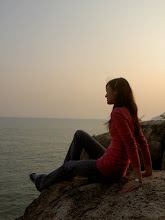 It's always nice to escape the busy life of the city and step back in time to explore Hong Kong's more historical and cultural side. This adventure brings me back into the northwestern part of the new territories to the Yuen Long District. Yuen Long is a large area in the new territories consisting of 8 towns. Among these, abundant with villages, is the rural town of Ping Shan. Inaugurated in 1993, the Ping Shan Heritage Trail is the first heritage trail in Hong Kong encompassing various heritage sites, all of which still well preserved. The heritage trail takes one on a journey to explore the past. Of great interest was re-visiting the lineage of the Tang clan, one of the earliest settlers here in Hong Kong (originating from Jianxi province in China) and one of the Great Five Clans of Hong Kong. They are considered to be of the punti people (cantonese word for "locals") and are the oldest, largest and most dominant chinese lineages of the New Territories. The Tangs still exist today and practice traditional village customs.
It's always nice to escape the busy life of the city and step back in time to explore Hong Kong's more historical and cultural side. This adventure brings me back into the northwestern part of the new territories to the Yuen Long District. Yuen Long is a large area in the new territories consisting of 8 towns. Among these, abundant with villages, is the rural town of Ping Shan. Inaugurated in 1993, the Ping Shan Heritage Trail is the first heritage trail in Hong Kong encompassing various heritage sites, all of which still well preserved. The heritage trail takes one on a journey to explore the past. Of great interest was re-visiting the lineage of the Tang clan, one of the earliest settlers here in Hong Kong (originating from Jianxi province in China) and one of the Great Five Clans of Hong Kong. They are considered to be of the punti people (cantonese word for "locals") and are the oldest, largest and most dominant chinese lineages of the New Territories. The Tangs still exist today and practice traditional village customs.















1. A blossom. Spring is here! 2. The shrine of the EarthGod , one of the things you will pass in the heritage trail. This deity is believed to protect villages and homes. It is conveniently located just outside of... 3. Sheung Cheung Wai, a traditional chinese walled village that is 200 years old and is the only one of its kind seen on this trail. Most of the wall has been demolished but some of the old houses inside are still standing. 4. A look inside the walled village. The second house on the left is one of the remaining old houses that is uninhabited. 5. The Tsui Sing Lau Pagoda (chinese translates to pagoda of the gathering stars) marks the beginning of the ping shan heritage trail. Believed to be built by a seventh generation member of the Tang clan (Tang Yin-tung), it is Hong Kong's oldest and only ancient pagoda over 600 years old. At 13 metres high, the top floor is home to the deity Fui Shing (champion star) who is responsible for success in exams. The Tang clan produced many scholars (so I guess the deity was doing his job!) 6. What is considered to be a "luxury" condo in a place surrounded by villages. 7. A papya tree in somone's backyard! 8. An old well that was believed to be built over 200 years ago even earlier than the walled village of Shueng Cheung Wai. It served as the main source of drinking water for 2 villages; Shueng Cheung Wai and Hang Tau Tsuen (the members probably built this well hundreds of years ago). 9. The Yeung Hau Temple housing the statues of Hau Wong, Kam Fa (patron saint of expectant mothers) and To Tei (God of the earth) 10. The statue of Yeung Hau, who was once a general who remained in the army depsite is health to protect the emperor of the Southern Song Dynasty. It is one of 6 temples in Yuen Long dedicated to this deity. 11. A look inside the internal courtyard of the Tang clan Ancestral Hall, one of largest halls of such kind in the territory and is over 700 years old. The hall is used for meetings for the members of the Tang Clan and even today still serves as a place for worship, traditional ceremonies and festivals. 12. The most interior part of the hall houses tablets of the Tang clan ancestors placed on an altar. This is probably where the living members of the Tang clan worship their ancestors. 13. I love the new territories for the views of mountains without high-rise buildings superimposed in front of them. 14. "For rent" signs in the middle of nowhere...I guess villagers want to rent out their village homes. 15. Located on top of a hill, this lovely building was once the Ping Shan police station built in 1899 and is now the Ping Shan Tang Clan Gallery opened in 2007. It displays the folk culture and heritage of Ping Shan. 16. The famous village " 5 spices chicken" at Wing Wah Restaurant in Yuen Long served in a traditional chicken bowl (there's a picture of a chicken on the side of the bowl) like they did in the old days.



No comments:
Post a Comment